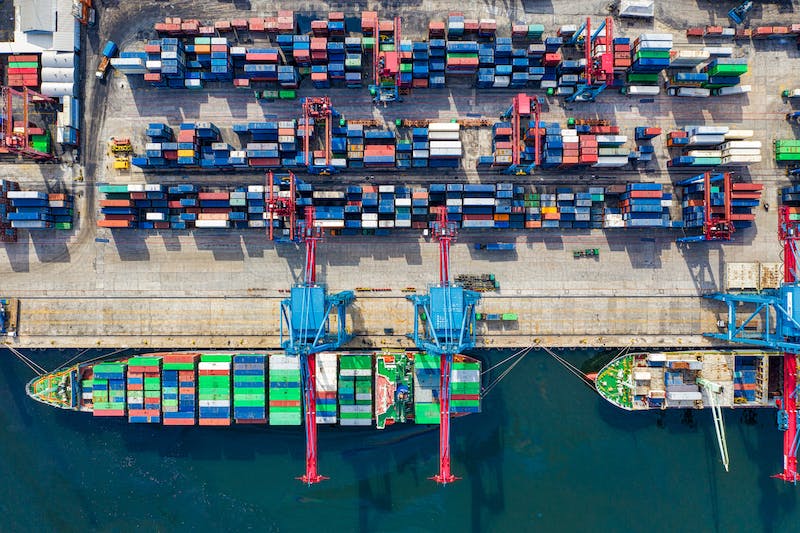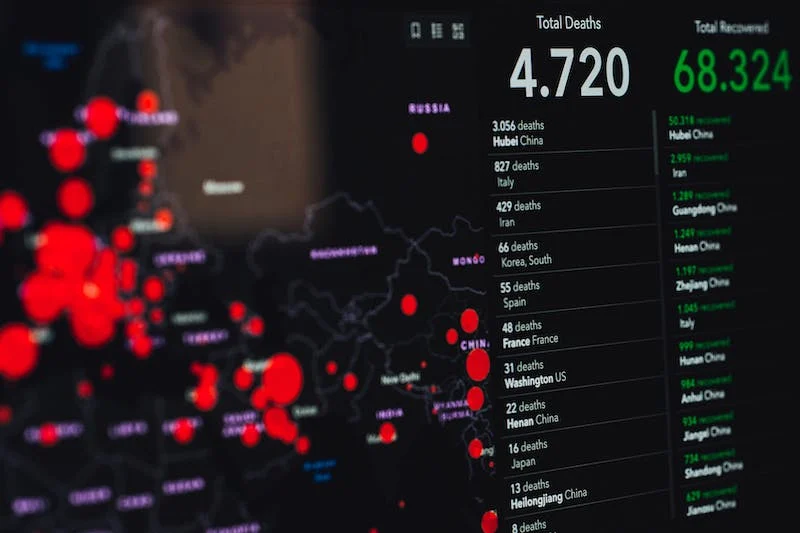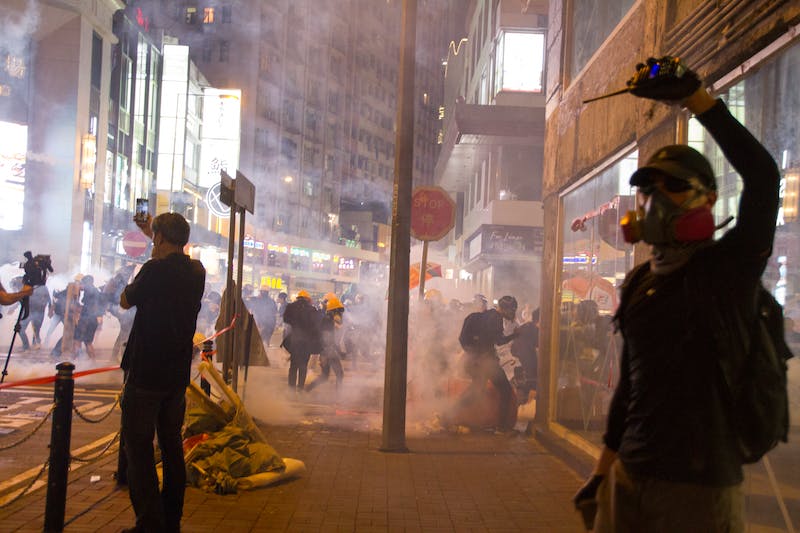
As we approach the end of 2023, it is impossible to ignore the many chaotic events that have marked the past few years and wonder what is in store for the coming years.
From pandemics to election interference, the world is faced with unprecedented challenges and turmoil. And while we may hope for a smoother and calmer year ahead, the reality is that chaos may continue to define our world in 2024, or likely escalate.
In this blog post, we will look at some of the potential chaos that we could be facing in 2024, from cyber attacks and military conflicts to economic collapse and social unrest. Buckle up, as we take a glimpse into what the year 2024 may have in store for us.
We will be looking at things like:
- The Rise of Cyber Attacks
- Military Conflicts and Political Chaos
- Supply Chain Crisis
- Governance and Economic Collapse
- Social Disorder and the Immigration Crisis
- Secessionist Thinking
- New, or Continued, Pandemics
- Healthcare Crisis
- Financial and Banking Collapse
- Climate Chaos
The Rise of Cyber Attacks

With the increasing reliance on technology and interconnectedness, the rise of cyber attacks has become an imminent threat to our society. As we look ahead to 2024, it is crucial to acknowledge the potential chaos that cyber attacks can bring. These attacks can disrupt critical infrastructure, compromise sensitive data, and cause significant economic damage.
Governments and businesses around the world are facing the challenge of safeguarding their digital systems against ever-evolving cyber threats. Hackers are becoming more sophisticated, utilizing advanced techniques to infiltrate networks and steal valuable information. The consequences of a successful cyber-attack can be devastating, leading to governance collapse, social chaos, and financial crises.
The WEF even held a conference in 2021 outlining the inevitability of a coming massive cyber-attack.
To combat this growing threat, organizations must prioritize cybersecurity measures. This includes implementing robust firewalls, conducting regular vulnerability assessments, and educating employees on best practices for data protection. Collaboration between governments, businesses, and individuals is essential in creating a secure digital environment.
Cyber attacks pose, what might be, the greatest threat to the American way of life in 2024 and beyond. They are fairly resource light – meaning that any good hacker with a laptop and an internet connection can do it; many countries around the world have spent a great deal of time perfecting their cyber warfare capabilities; it is a manageable kind of attack – meaning that it can be done on whatever scale is desired at the time; it is easy to blame on anyone – meaning that it is a good option for a false flag event, it makes a good excuse for rallying support for war; everything runs of the internet these days – meaning that everything is vulnerable. It is, perhaps, the smartest weapon in the arsenals of bad actors all over the world and has unspeakable destructive capability. Why wouldn’t it be used.
In 2024, the rise of cyber attacks will continue to pose significant challenges, but with proactive and vigilant efforts, we can mitigate the impact and safeguard our digital future. It is crucial that we invest in cybersecurity measures and stay informed about emerging threats to ensure a resilient and secure society.
Military Conflicts and Political Chaos

In a world marked by chaos, military conflicts and political instability continue to pose significant challenges to global stability. As we look into the future of 2024, it is essential to acknowledge the potential for increased military tensions and political turmoil.
The geopolitical landscape is rife with complex relationships and power struggles, which can easily escalate into armed conflicts. Heightened tensions between nations, unresolved territorial disputes, and differing ideologies can all contribute to the eruption of military conflicts. These conflicts not only result in loss of life and destruction, but also exacerbate existing political chaos.
We are already looking at hotspots in; Ukraine, Israel, Iran, Yemen, Taiwan, South Korea, Venezuela and the commercial shipping choke points of the Panama Canal, Suez Canal and the red sea. The possibilities for a global conflict are almost a certainty in the coming year.
Political instability and upheaval further add to the chaos. Governments around the world are grappling with rising dissent, polarization, and protests. Couple this with the looming threat of secessionist thinking of some states, potential election interference, immigration chaos and other kinds of political instability, and we can expect 2024 to be a rough ride.
Supply Chain Chaos

Supply chain chaos has become a pressing issue in recent years, as global events and disruptions have caused major disruptions in the flow of goods and services. From natural disasters and pandemics to political conflicts, the supply chain has been continuously tested, leading to widespread delays, shortages, and rising costs. This not only affects businesses, but also has a ripple effect on the economy, healthcare, and social order.
The domino effect of supply chain chaos on the economy cannot be underestimated. When disruptions occur in the supply chain, it sets off a chain reaction of economic problems that ripple through various industries and sectors.
Healthcare is a particularly vulnerable sector in times of supply chain chaos. During disruptions, the healthcare industry faces unique challenges that have a direct impact on patient care, public health, and overall well-being. Moreover, the economic problems caused by supply chain chaos can lead to increased costs for healthcare providers. The rising prices of medical supplies and equipment can strain the already limited budgets of hospitals and clinics. This can result in compromised quality of care and restricted access to healthcare services, particularly for vulnerable populations.
Disruptions in the supply chain don’t just impact businesses and the economy; they also have significant effects on social order. When the flow of goods and services is disrupted, it can lead to widespread social and societal consequences that affect communities at large.
One of the primary disruptions affecting social order during supply chain chaos is the potential for civil unrest. As shortages occur and essential goods become scarce, people may become desperate and resort to extreme measures to obtain what they need. This can lead to an increase in crime rates, looting, and overall social instability. The breakdown of social order can have far-reaching effects on the safety and well-being of individuals and communities.
As you can see, supply chain chaos has far-reaching consequences that go beyond the economy and healthcare. It disrupts social order, leading to civil unrest, exacerbating inequalities, and hindering educational opportunities. Addressing supply chain challenges is crucial for maintaining social stability and ensuring a fair and equitable society.
The Looming Threat of Governance and Economic Collapse

In the midst of a world plagued by chaos, the looming threat of governance and economic collapse casts quite a dark shadow over our future. The delicate balance of political and economic power and stability in nations across the globe is constantly at risk, teetering on the edge of chaos.
Today’s governments face huge challenges in maintaining the trust of their citizens, as corruption and ineffective governance erode confidence in leadership. When governance collapses, the consequences are more than serious, they are life threatening. Institutions crumble, law and order dissipate, and chaos ensues. The fallout can be catastrophic, leading to complete economic and social collapse.
In addition to the potential threat of governance collapse, the world also faces the very real threat of an imminent financial crisis. Unstable and artificially inflated markets, ever-growing debt, and global economic brinksmanship have created a ticking time bomb. A world financial crisis would absolutely devastate economies, leaving millions without jobs or access to basic necessities.
This is a scenario that, I’m afraid, is almost unavoidable in the coming years. How will you deal with it? How are you preparing?
Social Disorder and Immigration Crisis

In the coming chaos, we must confront the harsh reality of social disorder.
Social disorder can present in various forms, from protests and civil unrest to rising crime rates and growing inequality. The dissatisfaction and frustration felt by marginalized communities can erupt into social unrest or upheaval, threatening the fabric of our societies. It is crucial that we address the root causes of social disorder in order to mitigate the coming damage to our societies, our world and ourselves.
At the same time, the immigration crisis continues to be a pressing issue. The displacement of people due to conflicts, environmental disasters, and economic instability leads to a wave of migration that can strain resources and social systems. As nations grapple with the influx of immigrants, tensions rise and prejudice can take hold – which is not helpful for anyone.
By acknowledging and actively working to mitigate the challenges of social disorder and the immigration crisis, we can build more inclusive and resilient communities. Together, we can foster a society that values diversity and works towards equitable solutions, ensuring that chaos does not define our future.
The Rising Tide of Secessionist Thinking

Secessionist thinking, a growing trend in recent years, has the potential to further fuel chaos and division in 2024. These ideas, which advocate for the separation of certain regions or states from the federal government, can lead to significant political and social upheaval.
Secessionist thinking often arises from a variety of grievances and, as these ideas gain momentum, they can destabilize a nation, create tensions between different groups, and pose challenges to governance.
It is essential to address the root causes behind secessionist thinking and engage in open dialogue to seek peaceful resolutions.
The Persistent Threat of Pandemics

The persistent threat of pandemics continues to loom over our world, reminding us of the fragile nature of our global health. As we enter 2024, the potential for another devastating outbreak is a reality we cannot ignore. The emergence of new infectious diseases, the constant evolution of existing ones, and the ease of global travel all contribute to the persistent threat of pandemics.
The COVID-19 pandemic has demonstrated the catastrophic impact that a global health crisis can have on our society. From overwhelming healthcare systems to economic downturns, the consequences of a pandemic can be far-reaching and long-lasting. And while we have made significant progress, the threat of new variants and the potential for future pandemics remain.
A Healthcare Crisis on the Horizon

There may well be a looming healthcare crisis on the horizon. The global pandemic has exposed the vulnerabilities in our healthcare systems, and the potential for future crises cannot be ignored. The healthcare crisis will include various challenges, from access to healthcare services and medical supplies to the strain on healthcare infrastructure and personnel and lack of funding for healthcare services.
It’s important that each individual start to take an active role in their own health and stop relying on an already broken system to do it for them. Health is not something that can be outsourced to a bureaucratic system that, not only doesn’t have the resources to provide what is currently needed, but also has no motivation to see you healthy in the first place. Pharmaceutical companies don’t make money from healthy people so why would you expect them to want you to be healthy?
A healthcare crisis is coming and it is time that you learn to get ready for it. By taking proactive measures now, you can work towards a future where healthcare is not only accessible to you but actually makes you healthy.
Navigating the Financial and Banking Crisis

The year 2024 brings with it the looming threat of a financial and banking crisis, a reality that we must stop sweeping under the rug. The fragility of our global economy has been exposed, and it is imperative that we address the challenges ahead. The potential collapse of financial systems and banking institutions can have far-reaching consequences, affecting individuals, businesses, and entire economies.
How are you preparing for it? If you aren’t yet, it’s time that you start. What will you do when the banks are closed, the ATMs are out of cash, your credit card and debit card no longer function. Do you have a plan?
Climate Chaos: The Ultimate Test

As we examine the potential chaos that 2024 may bring, we cannot overlook the pressing issue of climate change. The impact of climate change has become increasingly apparent in recent years, with rising global temperatures, extreme weather events, and the depletion of natural resources. In 2024, we will face the ultimate test in addressing this existential crisis.
The effects of climate change are far-reaching and multifaceted. From rising sea levels and increased frequency of natural disasters to agricultural disruptions and the loss of biodiversity, the consequences of climate chaos are staggering. Our planet is at a tipping point, and urgent action is needed to mitigate further damage.
Whether it is from human behaviors, natural cycles, celestial cycles or anything else, climate change is going to be a serious problem for us all in the coming years and we had better start addressing it, not only on a governance and global level but also, on a personal level. How are you prepared for less food, less clean water, tougher winters, hotter summers, etc. It’s something that you need to be thinking about now.
In Summary
With all of these issue to face in the coming years, preparation is more important than ever. I would encourage everyone to evaluate how they are preparing for what is coming and, if you haven’t started yet, start taking it very seriously. It is good to be hopeful but it is better to be prepared.